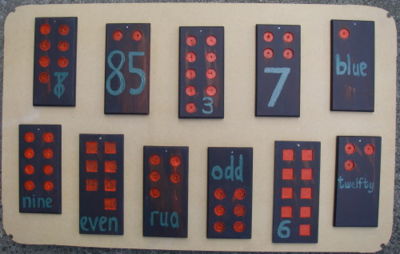Open Education/Assessment
Contents
Assessment
Evaluates student achievement and progress.
Identifies at risk and non achieving students.
Identifies areas of the curriculum that require attention.
Identifies special needs of students.
Plans and targets achievement of disadvantaged students.
Benefits students - informing of present skills and further needs.
Involves students - allowing to design the assessment tasks and establishing the criteria.
Supports teaching and learning goals - by informing teachers, students and school.
Planned and communicated - no surprises, expectations understood with suitably recorded results.
Applicable for the purpose - age appropriate, duration of assessment timely and fits with the criteria.
Valid and fair - will not be disadvantageous to age, gender, culture and socio-economic status of students.
Reported - results shared with students, families and people chosen by the students
Assessment types
- Summative assessment of the student is the process of simply measuring them. It might be interesting to compare and analyse measurements but, in themselves, these do not affect the growth of the student.
- Formative assessment on the other hand, is the equivalent of tending and caring for the student and directly affecting their growth.
- Moderating assessment is the process of ensuring the same measurements are used by teachers to monitor students growth.
- Self and peer assessment is the ability to evaluate oneself as part of responsible self direction and self management.
- Learning conversations
- Conferencing
- Written feedback
Assessment Tools
- Exemplars
- The ARBs
- eAsttle
- PAT
- STAR
etc
Assessment - Common sense - thoughts and questions
- The more that pupils are corrected the less they will do. Spelling and writing, timestables and maths, reading aloud and reading all come to mind
- The time for correction of a learner is when that learner will be upset or annoyed if the correction wasn't made
- The booger effect - finding whilst looking in the mirror a green booger attached to your face after talking to lots of people
- Helping a student work their way through a problem gives the teacher an understanding of the learner as a problem solver rather than that as a regurgitator of information
- As educators we are told that too many students leave high schools and colleges with poor or low leaving qualifications. When students left school last century 50% of students failed their leaving exams. Thats because scores were aggregated to the bell curve which had a 50% pass rate.
- Two students got similar test scores 49% for one 51% for the other: therefore it is assumed that the two students have the same basic understanding of a subject. Except one got most of the multi-choice correct whilst the other got the essay part correct, or one knew about statistics and algebra whilst the other knew about measurement and geometry.
- To test to see how easily we learn, the only way to do so is by using nonsense information; as this takes no credence for pre-learned information we all possess. To learn 10 nonsensical objects we find by timing them we learn the first few quickly and sequentially getting slower to learn until we reach the last object. We also un-learn these objects in the same manner the first few unremembered quickly and last object more slowly. Students cramming information before an exam or test quickly forget what they learnt.
- We don't need to assess and test our students to find out if they are learning. If the students are engaged in activities involving reading, mathematics, music and sport and they don't look bored or confused, then they will be learning about reading, mathematics, music and sport. Common sense.
I was fortunate to witness two classes running side by side
- One strictly run, prescriptive curriculum, teacher designed
- Student coercion for high performance
- The other class, student centered
- Students encouraged to take responsibility for their own learning
- One strictly run, prescriptive curriculum, teacher designed
- Beginning and end of year "formal" testing gives almost identical test results for maths and reading of both classes
- Unfortunately governments can't measure intrinsic motivation or learning satisfaction
For those who are stuck within the system of formalised "test and compare" assessment for career, funding or legislation here is a superb test to compare learning rates.
BSM Test
The only way to conduct a test to see what a person can learn and how quickly is by using information of a nonsensical nature
If the information to be learnt is of a sensible nature then the measurement of the information will be influenced by any prior knowledge the learner has
Therefore, 10 random and nonsensical objects are chosen to be learnt
Equipment:
10 random objects
A timer – watch, clock
Pen and paper
Administer the test:
Take 10 random objects and keep them covered
Uncover the objects and let the test recipient look at them for ten seconds and then recover the objects
Record what objects can be recited by the participant – at ten second intervals
Repeat at ten second intervals until all objects are remembered
This can now be done in reverse to see how long it takes for all objects to be unlearnt and instead of 10 second intervals use 1 day
The results:
The first few objects were learnt quickly and the tenth object took longer to learn, the same happens in unlearning
As predicted:
The test and the information gathered from it was both fascinating and nonsensical. It can be used to compare others for fascinating and nonsensical reasons.
| Work in progress, expect frequent changes. Help and feedback is welcome. See discussion page. |
